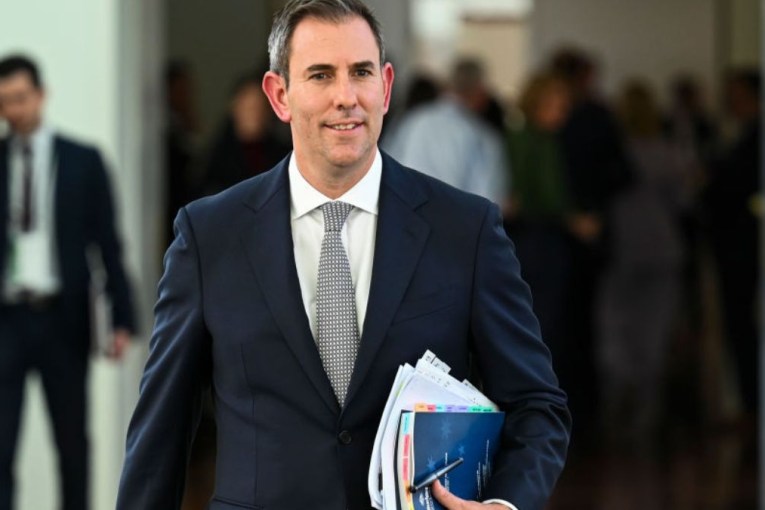Michael Pascoe: How the RBA is making inflation worse

A question for the freshly smacked Reserve Bank board on Tuesday: Is there a better example of the deficiencies of monetary policy than the bank prolonging higher rent inflation (the second biggest expenditure class in the CPI) by lifting rates to theoretically reduce inflation?
And while asking the RBA questions: Having repeatedly demonstrated the bank has no idea what the non-accelerating inflation rate of unemployment (NAIRU) might be, do you at least feel squeamish about explicitly seeking to increase unemployment to hit your latest NAIRU guess?
Now that the federal budget timetable is back on track, the RBA’s first Tuesday in May meeting is the bank’s chance to get its retaliation in first, ahead of the government’s second Tuesday in May budget.
Aside from whatever is decided about rates this Tuesday, on Friday the RBA releases its quarterly statement on monetary policy, putting its view of our economic outlook on the record ahead of Treasury doing the same the following week.
It is a chance for the bank to be blunt about our two biggest, immediate challenges beyond the simple inflation measure: The housing crisis, and that we are in a per capita recession set to continue as far as the eye might reasonably hope to see.
Friday’s statement will include numbers only tweaked a little from the previous quarter which forecast economic growth of just 1.5 per cent for 2023 and 2024. With population growth of 2 per cent, it means individual households are going backwards.
The discredited old “technical” definition of a recession was two consecutive quarters of negative growth. Try two years of it.
This is happening while on-going substandard wages growth is reducing living standards. With most wages growing at well below the inflation rate, what most people can afford to buy is shrinking.
At his National Press Club appearance earlier this month, Governor Philip Lowe said he didn’t like “per capita recession” language – but that is what it is. The outlook is for most Australians’ lived experience to deteriorate. For some Australians, it will deteriorate sharply.
As has been reported in this space before, the RBA thinks about a third of Australians with a mortgage are having their disposable cash reduced by at least 40 per cent. About 15 per cent of borrowers are having their disposable cash entirely wiped out.
And borrowers overall don’t have the worst of it. As Dr Lowe fingered at the press club, it is the renting class that is really copping it in the neck.

Reserve Bank governor Philip Lowe welcomed the far-reaching review of the RBA’s operations. Photo: AAP
The housing shortage – especially the criminal neglect of state and federal governments in shrinking the proportion of public housing – means tenants are facing steep rent increases as their leases renew or they seek new shelter. Their rent increases are a particularly rough end of the inflation pineapple.
“As renters tend to have lower incomes than other households and so spend a larger share of their income on essential items, they are less able to adjust their spending behaviour in response to high inflation,” Dr Lowe said.
“In addition, renters have historically been more likely to lose work during downturns. Since renters also tend to have fewer liquid assets and lower net wealth, they have historically been considerably more likely to experience financial hardship than other households.”
The bank’s liaison with community services found it is primarily renters behind the surge in people seeking help.
This is where the two opening questions collide.
There is no quick fix for our housing debacle, but increasing interest rates worsens it by discouraging building. The jump in rates is a factor in falling building approvals. Less supply with more demand equals higher rents.
Then there’s the NAIRU
To put it bluntly, the RBA and Treasury want more unemployment. Policy is being set to achieve that. Treasury guesses the NAIRU is 4.25 per cent – so it wants about 620,000 people officially looking for work, roughly 110,000 more than the case with a 3.5 per cent unemployment rate.
Remember Dr Lowe’s point that renters are those most likely to lose their job, and do so with few resources to fall back on.
People with employment, with good employment, are having trouble finding affordable accommodation in many areas. There simply isn’t any for people without jobs – and public and social housing is full.
The RBA has its narrow remit. It becomes cruel when it is not balanced by appropriate government policy to provide an adequate safety net for the people who become collateral damage.
If RBA policy is reducing housing supply, government policy must be to directly increase it via public housing as quickly as possible. But it is not.
Weighing the RBA review, one of our most distinguished former public servants, Michael Keating, concluded that the recommended changes would not make much difference.
“As I read the review’s report, the RBA’s biggest failings were a less than adequate understanding of the labour market and how that was affecting wages growth, and a failure to properly allow for the influence of supply constraints,” Dr Keating wrote.
“But in both cases, most other macro-economists were equally at fault. For example, I don’t recall economists (other than Joe Isaac and me) querying the RBA and Treasury estimates of the NAIRU and its influence in years past, and I doubt whether many economists have practical knowledge of possible supply constraints compared to relevant businesspeople.
“In addition, there is a question about the role of monetary policy when faced with supply constraints that the review does not address.
“For example, right now the two biggest supply constraints are energy and housing, and increasing interest rates is a very slow and inefficient way to try to bring energy prices down, while the impact of higher interest rates on housing is to further limit the supply of new dwellings.”
Thus the absurdity of an RBA meeting on Tuesday considering another rate rise that will worsen inflation in one key area, and not do much about it in another, relying on a guess about what the NAIRU might be when the RBA or Treasury have been reliably wrong about wages growth for a decade.
The RBA should continue to pause at this meeting, while taking the opportunity in commentary and the quarterly statement to lash our dismal governments’ policy failures.
It is encouraging to see more people pushing that the best form of rent control is public housing.
The RBA needs to add its voice as loudly as possible.








